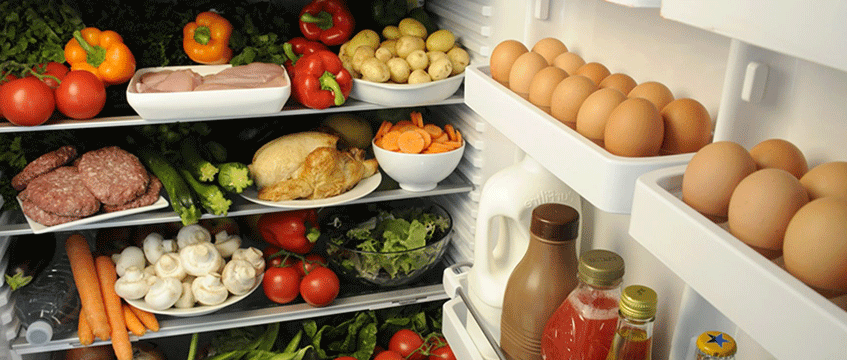The Brexit deal is still uncertain, but industrial operators know the process of moving goods to and from the Continent is going to change. Helen Roxburgh reports.
With the UK’s impending exit from the European Union, many of the UK’s property markets have been thrown into a period of uncertainty.
In the industrial sector, which is closely linked to consumer sentiment, concerns about a retail slowdown have made some nervous, as occupiers consider the implications of Brexit on their supply chains, and businesses delay investment decisions.
“Pretty much two-thirds of take-up in the logistics sector is related to the retail market,” says Kevin Mofid, head of industrial research at Savills. “So if Brexit does have a negative impact on the retail market, and on consumer spending, then it’s only natural that it’s going to have a negative impact on the logistics market as well.”
UK logistics have already been going through a structural shift brought about by booming e‑commerce demand, and quality space is tight. According to Colliers, UK prime rents are currently an average of £9 per sq ft, with a strong demand for urban “last mile” mid-box requirements, pushing rents in Enfield and Croydon up by 14% and 16% respectively, to around £12.50 per sq ft each.
Rents are expected to increase by 2.3% this year, slowing to 1.9% in 2019, before resuming a stronger upward trend in the following years.
While the sector has been doing well, Richard Bains, managing director of Chancerygate, warns this is primarily because of a lack of new grade-A space, and so the market is still vulnerable to headwinds in the wider economy.
“Occupational demand in urban logistics is very much driven by the strength of the SMEs in the UK, and while UK GDP is steady, it is clearly under-performing compared with the rest of Europe as a consequence of the Brexit decision and process,” says Bains.
Need for more warehouse space after Brexit
Rents have risen by around 15% since 2013, says JLL, while the logistics property market outperformed retail, residential and office space in 2017 with a 20% return.
According to a 2017 report by Cushman & Wakefield, total returns in the industrial and logistics sector should continue outperforming other sectors for the next five years, while the sharp fall in sterling following the EU referendum should prove a boost to exports and to the manufacturing sector.
“Whatever version of Brexit we have, let’s assume that product is going to be slower to get in and out of the UK,” says Mofid.
“Whether that’s grocery, manufacturing or white goods, it’s going to slow down. If we as consumers are going to have the same level of service as we have been used to, then more stuff is going to have to be stored in the supply chain.
“The question is: where do you store that stuff? There’s going to be a competitive tension in the market somewhere, because people are going to be looking for space that they can’t necessarily get.”
The Navigating Brexit report from KPMG forecasts a need for greater warehouse space in the UK after Brexit. Even before Brexit happens, occupiers are starting to stockpile non-perishable goods and take advantage of current tariffs and favourable VAT arrangements, which could put fairly immediate pressure on space.
KPMG estimates that companies have been over-ordering by 15-20% over the past 18 months.
For perishable goods which can’t be stockpiled, there will be a need for Port Health facilities after the UK leaves the EU, as well as chill and deep-freeze facilities. Currently, in the single market, there is no need for Port Health exams for goods moving within the market, irrespective of their origin.
“Post-Brexit, one of the things that is bound to be affected is the volume of goods that come from Europe, because a large amount of it is foodstuff-related,” says Chris Evans, senior manager at Colliers.
“All sorts of products come from the EU to the UK, and it doesn’t have to go through Port Health. But once we’re out, Port Health will have to be taken into account, which will mean there will need to be a facility to accept those products while they are examined by Port Health, because it’s a fairly time-consuming process.
“We don’t currently have any at all at Dover. It’s a significant challenge and it has to be addressed so people can get to know what they’re doing.”

CREDIT: Food and Drink/REX/Shutterstock
Port development in general is likely to be an area of both opportunity and concern after Brexit (see below), and could lead to new areas of growth – such as free trade zones and bonded warehouses. These opportunities might stimulate new industrial parks and logistics growth in places around ports and along the Kent Corridor in particular.
There is a need to develop adequate customs facilities swiftly. KPMG estimates that if shipping containers are delayed in UK ports by just one day, the country could face demurrage costs at current rates of at least £126m, and warns it could be “possibly far more”.
With this in mind, occupiers are assessing their supply chains and considering domestic alternatives or relocations, and investors are considering locations keenly.
“We have a strong pipeline and expect to be on site in more than 10 locations all across the UK in 2018,” says Chancerygate’s Bains.
“We aim to be buying further sites this year but will be very selective, depending on the dynamics of individual markets.”
Canadian investor Ivanhoé Cambridge announced in November that it had partnered with Peel Logistics Property to develop UK logistics real estate, with an initial portfolio of three properties in Manchester, Liverpool and Sheffield.
“We have continued to acquire industrial and logistics properties,” adds Chris Perkins, head of business space at M&G Real Estate, which has recently completed developments in Coventry and acquired sites in Leeds and Alton.
“We find it a very competitive market, so we are often developing out schemes speculatively, which allows us to access the land and develop from the start – it has a longer lead-in time, but we are very much a long-term investor looking for income and capital appreciation into the medium- and longer-term, and we find that industrial logistics very much provides that for us.”
Brexit for the industrial and distribution sector in Europe
Across the Channel, many see opportunities after Brexit, with Europe’s major cities actively marketing themselves to international companies currently based in the UK. Some have already relocated offices and manufacturing hubs: Goodfish Group, which makes parts for the car industry, has committed to opening plants elsewhere in the EU, initially Slovakia.
In November, the Chartered Institute of Procurement & Supply said 63% of surveyed EU companies planned to move some of their supply chain out of the UK. For pan-European supply chains, experts say the impact will be minimal.
“Pan-European supply chains rarely involve the UK simply because the UK is an island,” says Lisa Graham, head of EMEA industrial research at Cushman & Wakefield. “If goods are moving to or from Asia, or moving out of central Europe to Western Europe, they usually go through Poland, the Czech Republic, Slovakia and Hungary – all with good connections by motorway.”
But there will be implications for those doing business with the UK. The CIPS study found that 40% of UK businesses with EU suppliers have begun the search for domestic alternatives and countries such as Germany in particular, which trades heavily with the UK, could stand to lose a lot of business in the event of a “hard” Brexit (see below).
The car industry is one example where Europe is expected to gain at the expense of the UK: investment in the UK’s car industry has been witnessing dramatic falls in over the past few years. Figures from the Society of Motor Manufacturers and Traders (SMMT) show car-makers and suppliers invested £1.1bn last year, down from £1.7bn in 2016 and £2.5bn in 2015. Mike Hawes, SMMT chief executive, said businesses were “waiting as long as they can before making their investments”.
Honda has said it relies on 350 lorries a day arriving from the Continent, and with almost 80% of cars made in the UK exported, there is concern companies will relocate their plants to central and southern Europe.
“If I were thinking about moving somewhere, I would think about Spain; the percentage of younger people is higher than in other countries in Europe, they’re in the EU, there are a lot of ports, and the labour market is cheaper and flexible,” says Graham.
“And for the automotive sector there are some very good parts suppliers. Spain really could take away some business from the UK.”

CREDIT: Ian Tuttle/REX/Shutterstock
The pharmaceutical industry is another sector weighing up the costs of business in the EU over the UK; Amsterdam was also chosen recently as the new home of the European Medicines Agency, moving 900 jobs from the UK to the Netherlands.
In response, the UK’s second-biggest drug-maker, AstraZeneca, said it would continue plans to improve its Macclesfield facilities but would “wait to see” before committing to manufacturing expansion in Britain.
GlaxoSmithKline, the UK’s biggest drug-maker, has also warned it will scale back its UK presence, with plans to shut its Slough factory, drop proposals for a new biopharmaceutical factory in Cumbria, and outsource manufacturing from its West Sussex site, with associated job cuts.
“I think companies have to start thinking about whether it [the UK] is the right location for the sector they’re in,” adds Graham.
Geographical areas tipped to benefit from Brexit include the Netherlands, thanks to its good ports and trade links and the fact that English is so widely spoken. The Dutch agency tasked with attracting foreign business, the Netherlands Foreign Investment Agency, said in January that 18 businesses had already decided to leave the UK and relocate to the Netherlands as a result of Brexit.
“As a new entrant into Europe, the key question is: where would you go first?” adds Mofid, who also said investors might consider European real estate rather than UK opportunities.
Some investors – including Asian investors – have already started to turn their attention to prime locations in Europe. In October Asia’s biggest warehouse operator, Global Logistic Properties, made its first push into the Continent with the acquisition of European industrial property company Gazeley for $2.8bn (£2bn).
Earlier in the year, Blackstone sold its European logistics real estate company, Logicor, to China Investment Corporation for a record €12.25bn (£10.8bn).
Logistics specialist Gramercy Europe made the decision not to include the UK in its latest fund, for which it has raised €260m.
And Chris Perkins from M&G Real Estate, which has a portfolio of €317.4m in industrial assets across continental Europe and £2.4bn in the UK, says more investment will go towards Europe in the future, although it still has plenty of plans for UK opportunities.
“[Our UK investment] clearly is a bigger number than our exposure in Europe at this stage, but over time I would see the ratio tightening,” says Perkins. “But I don’t think it [Brexit] will fundamentally change our investment approach to both the UK and Europe.
“We are investing across Europe and we will continue to do so, but that wouldn’t be to the exclusion of the UK.”
Soft versus hard Brexit for sheds
If Brexit negotiations result in the UK leaving the single market, tariffs will be applied to goods entering the UK from other EU countries, making those goods more expensive and probably causing a ripple-down effect within the logistics industry.
The car industry is one of the sectors likely to be affected most by a hard exit – particularly trade between Germany and the UK. Every second new car sold in Britain comes from a German-owned brand, and every second car made in the UK is exported to a customer in the EU, according to Germany’s automative industry lobby.
The impact will also vary depending on what agreement is reached about Northern Ireland and the border with the Republic. For a long time Ireland has used the UK as a route for its logistics chain to continental Europe, but if tariffs are imposed there may be opportunities to create more direct services between Ireland and Europe.
However, KPMG has already warned of the risk of a “choke point” between Holyhead, in North Wales, and Dublin if there are inadequate preparations.
Whether Brexit is hard or soft, the supply imbalance in the UK and growing demand are fundamentals that could offset volatility caused by Brexit, and most investors and developers consider market fundamentals strong enough to withstand Brexit turbulence.
For some, a soft or hard Brexit makes little difference and isn’t the primary risk to the market.
“A more significant threat is probably a change in the UK government,” says Chancerygate’s Bains. “A Corbyn government could threaten the viability of development in a number of ways.”
Post-Brexit industrial boom in the North
The post-Brexit vision is for a UK that manufactures more domestically, and much of this domestic manufacturing is pegged to take place in the North, where institutions such as Manchester University’s Graphene Institute are supporting skills and innovation.
With the expansion of Manchester Airport, and export opportunities to Europe via Liverpool and Hull, advocates argue northern England could promise an industrial renaissance for Brexit Britain.
“We are very confident about the Northern Powerhouse, and the main cities across that band – Liverpool, Manchester, Leeds, Sheffield, Hull and Newcastle – are all cities we believe in,” says Chris Perkins from M&G Real Estate.
“They will benefit in the medium term from further devolution, northshoring, HS2 links, the fact there is a very strong workforce and Russell group universities, plus lower occupier costs. For us, logistics in the Northern Powerhouse area is a very attractive offer.”
After years of no movement, industrial rents in Newcastle saw a rise last year, as did Middlesbrough, while Yorkshire and the Humber rents increased by 5%.
And in January, plans were submitted for the first phase of development to turn more than 150 hectares of land across Sunderland and South Tyneside into the International Advanced Manufacturing Park, with the potential to create more than 7,800 jobs next to the Sunderland Nissan car manufacturing plant.
Nissan has had assurances from the UK government over its post-Brexit trading environment, and recently announced its new Qashqai and X-Trail models would be made at the plant from 2020.
However, other manufacturing decisions are on hold until the full details of Brexit are known. Siemens Gamesa Renewable Energy had been considering extending its rotor-blade production in Hull, but has postponed its plan until there is more clarity about the post-EU landscape.

CREDIT: Aflo/REX/Shutterstock
Port potential
Whatever type of Brexit deal is agreed, there will be a lot of attention on development near to and around port facilities.
According to KPMG, if the UK sees a cliff-edge departure from the EU, some 5,000 new customs officers will be needed, as 180,000 extra traders, many of them SMEs, find themselves subject to import and export checks.
Both the freight and haulage industry and Eurotunnel have warned that a busy port such as Dover could face gridlock of up to 30 miles if customs checks are introduced after the UK leaves the EU.
A group of influential MPs warned there would be a fivefold increase in customs checks at Dover and other ports (from 60m a year to 300m) after Brexit – while 70% of Felixstowe’s trade is with non-EU countries, almost all the trade of ferry ports such as Dover is with EU members.
“We are in a situation where the exit from the EU is going to be quicker than these things can be put in place,” warns Chris Evans of Colliers International.
For investors, port land is a big opportunity post-Brexit. Chris Perkins at M&G says the investor is considering future opportunities in the Kent corridor and land surrounding key ports.
“Investing around the major container ports and rail networks of the UK would be most certainly in our strategy,” he says. “We have had investments in Felixstowe, in Southampton, and we are casting an eye wider in the light of how it may all play out with Brexit.”











